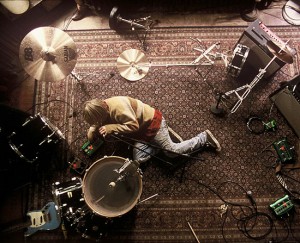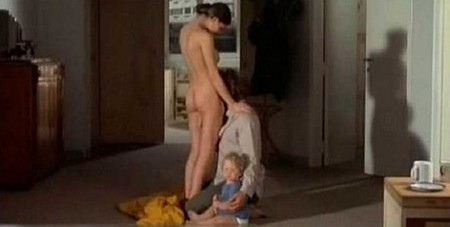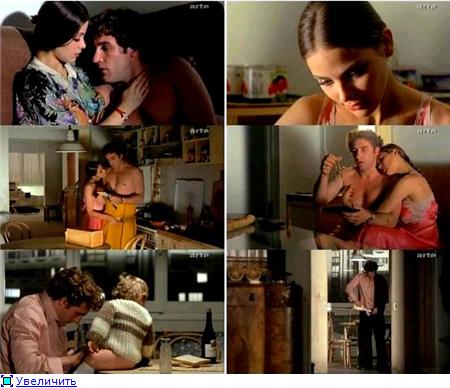Written in late 2006 and published in Discovering Orson Welles the following year. — J.R.

The process-oriented methods that permitted at least four Welles features and a number of short works to be left unfinished are easier to understand than they would be if we adopted the mental habits of producers, which is exactly what more and more critics today seem to be doing; but that is no comfort to those of us eager to understand, and eager as critics always are to have the last word, which we are not about to have with this filmmaker. At least our direction, as always, is laid out for us: as long as one frame of film by the greatest filmmaker of the modern era is moldering in vaults, our work is not done. It is the last challenge, and the biggest joke, of an oeuvre that has always had more designs on us than we could ever have on it.
Bill Krohn’s cautionary words in Cahiers du cinéma’s special “hors série” Orson Welles issue in 1986 offer a useful motto for the present collection of essays, whose own title, Discovering Orson Welles, suggests an ongoing process that necessarily rules out completion and closure — the two mythical absolutes that Welles enthusiasts and scholars seem to hunger for the most. Read more
From the Chicago Reader (August 12, 2005). — J.R.

Last Days
* (Has redeeming facet)
Directed and written by Gus Van Sant
With Michael Pitt, Lukas Haas, Asia Argento, Scott Green, Nicole Vicius, Ricky Jay, and Thadeus A. Thomas.

A film about a junkie rock musician, played by Michael Pitt at his most narcissistic, doing nothing in particular for the better part of 97 minutes isn’t my idea of either a good time or a serious endeavor. Yet a few of my colleagues seem to be responding to Gus Van Sant’s Last Days the way some responded to The Passion of the Christ — taking it without a grain of salt or an ounce of irony. But it’s the grunge version of the Christ story, so that makes it hip.
Manohla Dargis of the New York Times writes that it’s about the “resurrection of Gus Van Sant,” the “mystery of human consciousness,” the “ecstasy of creation,” and “how sorrow sometimes goes hand in hand with the sublime.” Even a compulsive jokester like the New Yorker‘s Anthony Lane sounds like he just stepped out of Sunday school, writing, “Some of the motion has a hypnotizing grace,” and when the camera retreats from a house where Blake (Pitt) is noodling distractedly on his guitar, “We might as well be overhearing him at prayer.” Read more
From Monthly Film Bulletin, November 1976, Vol. 43, No. 514. — J.R.

Ultima Donna, L’ (The Last Woman)
ltaly/France, l976
Director : Marco Ferreri

Cert—X. dist–Columbia.Warner. p.c—Flaminia Produzioni Cinema (Rome)/Les Productions Jacques Roitfeld (Paris). p—Edmondo Amati. p. managers–Maurizio Amiti, Roberto .Giussani. asst. d—Enrique Bergier, Bernard Grenet. sc–Marco Ferreri, Rafael Azcona, Dante Antelli. story–Marco Ferreri. collaboration on dial–Noël Simsolo. ph—Luciano Tovoli. col—Eastman Colour. ed–Enzo Meniconi. a.d—Michel de Broin. m—Philippe Sarde. m.d—Hubert Rostaing. cost—Gitt Magrini. sd. ed— Gina Pignier, sd. rec–Jean-Pierre Ruh. l.p—Gérard Depardieu (Gérard), Ornella Muti (Valérie), David Biggani (Pierrot), Michel Piccoli (Michel), Renato Salvatori’ (René), Giuliana Calandra (Benoîte), Zouzou (Gabrielle), Nathalie Baye (Girl in Shopping Mall), Soulange Skyden (Girl at Night-club), Carole Lepers (Anne-Marie), Daniela Silverio (Jane), Vittorio Ganfoni (Policeman with Dogs), Guerrino Totis. 9,799 ft. 109 mins. French dialogue; English subtitles.
French title—La Dernière Femme

Gérard, a young engineer whose wife, Gabrielle, has recently left him, meets Valérie, the attractive teacher at the factory nursery where he goes to collect his thirteen-month-old son Pierrot, and invites her home with him; she agrees, and is assured by her lover Michel thathe won’t interfere. Read more






